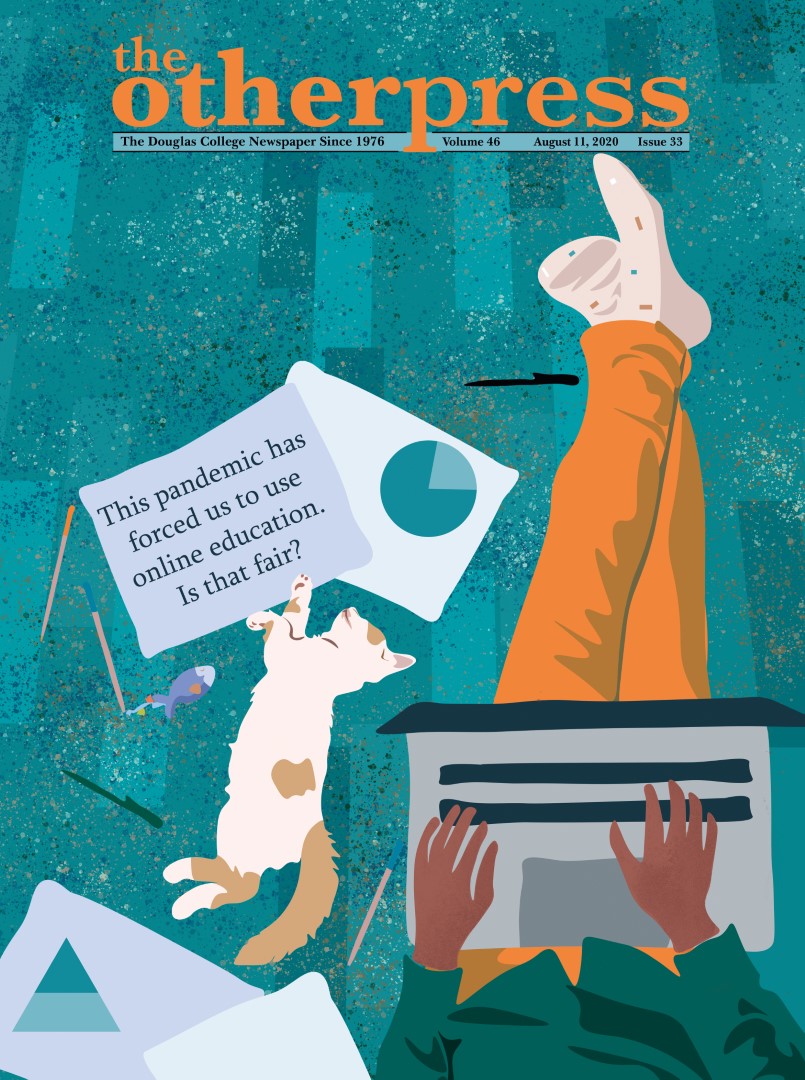The obsession with fitting in by fitting clothes
By Mercedes Deutscher, Staff Writer
What does the word “fat” really mean? Fat is more than a politically incorrect description of being overweight. Fat is fear. Fat is seen as one of the worst things a person could be. Fat is to be physically and mentally ugly. At least, that is what fat is considered to be in Western culture.
In an atelophobic (the fear of not being good enough) society, the thinner a woman or the more shapely and muscular a man is, the better. While not everybody is concerned about meeting these increasingly impossible beauty standards, most people are.
In Canada alone, the statistics are shocking. A survey by the Canadian Women’s Foundation shows that 90 per cent of “girls say they feel pressure from the media to be thin … Over 50 per cent of girls say they wish they were someone else … [and] 50 per cent of girls in grade six are on a diet.” Meanwhile, only “36 per cent of girls say they are self-confident”; the stats for girls in grade 10 are even worse, as that percentage drops to 14.
“I think I first started consistently judging my body around age 10, because the way people talked about being overweight or generally undesirable made it seem like that was the worst thing in the world,” says high school student Bonnie Duff.
Boys are also affected. Some boys attempt to put on muscle prior to even their 11th birthday. Between 2001 and 2011, the occurrence of males being hospitalized for eating disorders has increased by two-thirds.
There is no doubt that the media has affected society’s view of beauty and the obsession with physique. Back in the mid-20th century, women like Marilyn Monroe were viewed as sex icons, and although her weight fluctuated, Monroe at one point weighed 140 pounds. Such body types are described as full-figured, and have been seen as beautiful until the past few decades, still being the standard of beauty in several cultures.
In the last few decades, female role models have become thinner and thinner. Today, many of these women who are praised for their beauty are depicted by photos that are adjusted and touched-up using photo editing programs. When women compare themselves to the photos of these slim women, they are striving for a beauty standard that cannot exist without digital alteration.
Though subtle, even media outlets that are meant to be covering news and current events take a position on physical appearances. Hillary Clinton, despite her many political accomplishments, is examined and critiqued for her appearance.
In films, television, and advertisements, there is a formula to what a sexually desirable person is supposed to look like. Victoria’s Secret uses models to display its lingerie, which could be considered necessary. However, the models shown in these advertisements are never of varying sizes and shapes. AXE Body Spray appeals to its target audience with commercials that usually depict a young man using the spray to catch the attention of thin and sexualized women. Of course, some advertisements try to counter these sexualized campaigns by airing feel-good commercials, such as the Dove Campaign for Real Beauty. However, the fact that both AXE and Dove are both owned by Unilever is rather hypocritical.
Although the media has a large role to play in implementing difficult beauty standards, corporate businesses have further progressed this obsession. The beauty industry makes $160 billion per year. Meanwhile, businesses such as restaurants often choose employees based on their physical traits. Entire restaurant chains, such as Hooters, only hire thin and well-endowed women.
What is a person supposed to do when being pressured by such an appearance-crazed society? While some may not be able to achieve full confidence in themselves, they try. When asked what she would tell her younger self, Duff responded, “I would ask her if ‘fat’ was the worst thing I could be. If that was the definition of hitting rock bottom or somehow failing at life.”
It is important to remember that although beauty standards have great influence within Western culture, they are only as important as one thinks of them. What is perceived as “beautiful” will change like it has changed throughout history. Beauty is an ambiguous term and can cover a wide range of characteristics, both external and internal.
Many people are self-confident in their appearance, abilities, and accomplishments. Some of them fall into a range of common attractiveness and some do not. So as long as they stay true and confident to themselves, they can take on the world. It is time for people to learn to love themselves and to stop trying to be anyone else.



